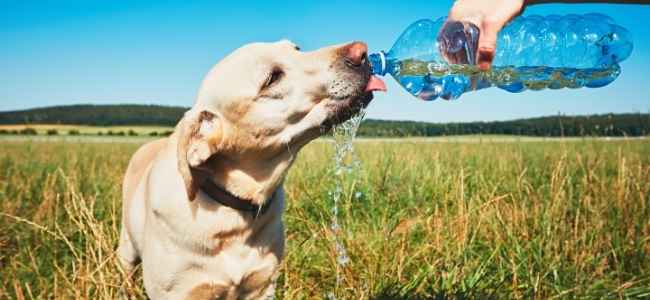Water is life, so they say. This fresh and sparkling resource is critical to human survival, and just as important to animals. Besides being essential for survival, water provides a slew of benefits to our pets, such as regulating body temperature, promoting urinary tract health, maintaining energy levels, and aiding recovery from illness.
Because they cannot let us know when they’re thirsty, responsible owners should take it upon themselves to ensure their beloved pets are adequately hydrated.
Getting your pets to drink enough water is as easy as A-B-C. Here are some tips:
1. Consider a pet drinking fountain
Some pets instinctively prefer fresh and flowing water. Hence, a miniature drinking fountain can lure our furry friends to drink water more often than they would from a dish.
Besides being more appealing than stagnant water, the filter used in drinking fountains for pets makes the fresh water coming out of it taste better.
2. Identify your pet’s favorite water bowl (or bottle)
There are plenty of reasonswhy your pet does not want to drink water from a particular bowl. It could be because they don’t feel comfortable, they don’t like the taste, or they’re simply being picky (yes, they can be fussy like humans, too).
Try feeding them with water using different types of bowl: plastic, ceramic, stainless steel or glass, and see whether they prefer any of them.
When choosing the size of a water bowl, imagine whether your pet will feel comfortable drinking from it. For instance, a cat’s water bowl should be wide and shallow to work perfectly with their smaller lips and long whiskers. Other animals such as guinea pigs may prefer water bottles over bowls.
3. Having one bowl is not enough
Having more than one water source for your pet is another surefire way to encourage them to drink more. Place two or more water dishes in and outside your house where your dog or cat can just bury its head to re-hydrate. Or if you have larger animals, opt for a stock trough like the CT300 from The Water Tank Factory
If you place a bowl outside, make sure it is in a shaded area to prevent it from getting hot. No human or animal wants to drink boiling hot water, right? Having multiple water sources is also helpful in ensuring out pets get hydrated even when we’re away from them.

4. Regularly replace water
Just as they will instinctively preferflowing over stagnant water,your pets will prefer freshly served water to drink. Cats are known to get easily discouraged from drinking if they notice stagnant and dirt-ridden water in their bowl.
So, if you’re hydrating them via water bowls or dishes, it’s best to replacethe water regularly to encourage them to re-hydrate.
Washing the bowl and replacing the water in it is especially important if you have birds, because they use them for both drinking and bathing. The water for bathing may get soiled with fecal matter and other contaminants. For this reason, encourage birds to use separate bowls for cleaning and drinking.
5. Put water in your pet’s food
Adding moisture toyour pet’s food is another way to keep them hydrated. Dry food is common and typically cheaper than wet food commercially sold in cans. It’s also less smelly, which is why pet owners may prefer dry products over canned and moist pet foods. Soaking pet kibbles in water ensures your pet gets enough water to last through the day.
6. Consider ice cubes or popsicles
If your pet is not inclined to drink water from the bowl or dish, let your dog or cat lick ice cubes or popsicles. Doing this helps replenish the water lost in the summer heat or increase their daily water intake.
7. Set up a cool place for your pet
Having a cold, comfy spot where pets can cool off is important, too, especially as your they can easily soak up the heat while frolicking under the sun. This can help prevent dehydration which leads to heat stroke in some cases.
How much water should your pet take?
According to WebMD, a dog should drink at least one ounce of water for each pound they weigh. If your dog weighs 25 pounds, for example, they’ll need to lap up 25 ounces of water as a minimum. Cats need relatively less, around three to five ounces per five pounds of their body weight.
Besides its weight, the ideal amount of daily water intake for your pet also depends on its age, activity level, and warm weather exposure. A good way to know your pet’s ideal water intake is to ask your veterinarian.
What are the signs of dehydration?
As a responsible pet owner, it’s important to know the common signs of dehydration to prevent further health problems, including:
- Vomiting and/or diarrhea
- Lethargy
- Loss of appetite
- Excessive panting
- Sunken eyes
- Dry and sticky gums
- Loss of skin elasticity
The Takeaway
Adequate water intake is important for your pet’s overall well-being. Ensure they have plenty of opportunities to drink, indoors and outside. When your dog or cat is alert, energetic, and keen for their dinner, these are good signs that they’re properly hydrated.


